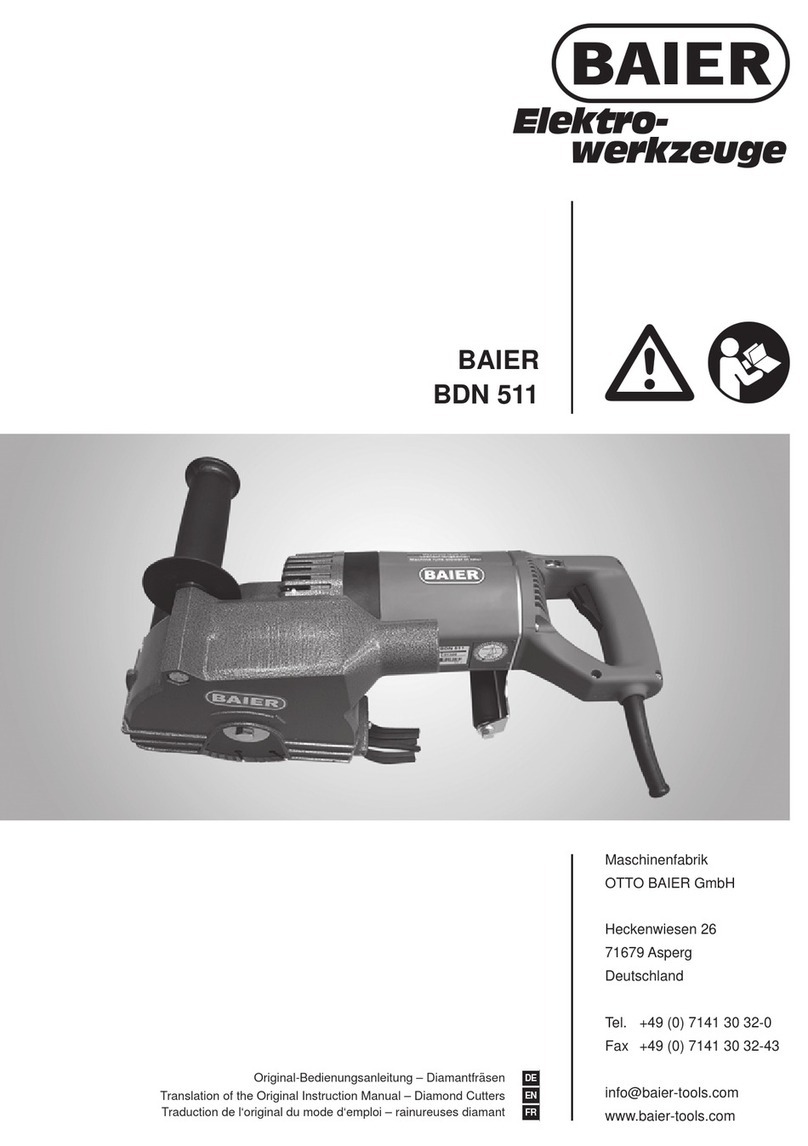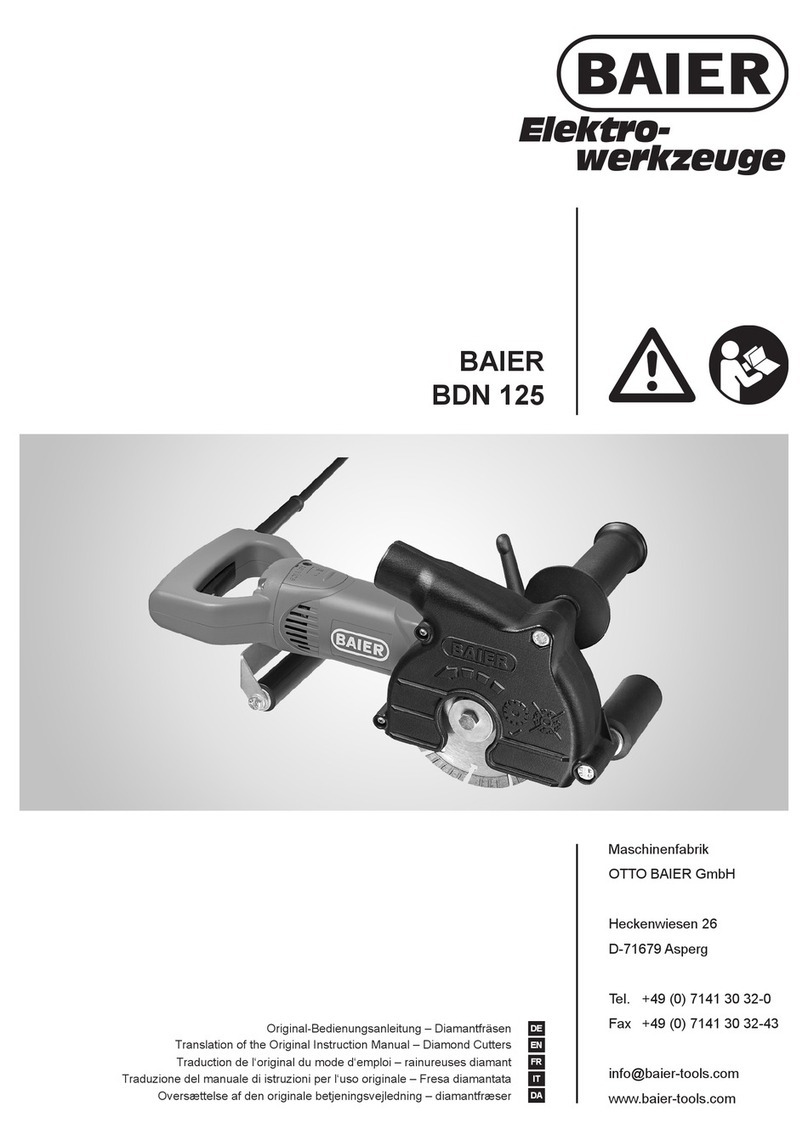2
Contents
Contents.................................................................................................................................... 2
Important Information.............................................................................................................. 2
Pictograms................................................................................................................................ 3
Explanation of the pictograms on the wet concrete cutter / chaser........................................ 3
Explanation of the pictograms used in the text....................................................................... 3
For your Safety......................................................................................................................... 4
General safety instructions for power tools ................................................................................ 4
1) Safety at the place of work .............................................................................................. 4
2) Electrical safety ............................................................................................................... 4
3) Safety of people............................................................................................................... 5
4) Use and handling of the power tool ................................................................................. 5
5) Service............................................................................................................................. 6
Machine-Specific Safety Instructions ..................................................................................... 6
Operating personnel requirements .................................................................................. 6
Workplace safety ............................................................................................................. 6
Electrical safety................................................................................................................ 7
Safety of people ............................................................................................................... 8
Hazards when using and handling the power tool ........................................................... 9
Service / maintenance / repair ....................................................................................... 11
Technical Characteristics...................................................................................................... 12
Technical specifications ....................................................................................................... 12
Machine characteristics........................................................................................................ 12
Scope of Supply..................................................................................................................... 12
Intended Use........................................................................................................................... 12
Machine Parts and Controls.................................................................................................. 13
Tools and Accessories.......................................................................................................... 13
Before Starting Work ............................................................................................................. 14
Adjusting the front handle..................................................................................................... 15
Check personal protection switch......................................................................................... 15
Operation and Control........................................................................................................... 16
Fitting or changing grinding discs......................................................................................... 16
Adjusting the cutting depth ................................................................................................... 17
Connecting the dust and/or water extractor ......................................................................... 17
Adjust water supply .............................................................................................................. 18
Switching on the wet concrete cutter / chaser and cutting ................................................... 18
Finish cutting process........................................................................................................... 19
Cleaning.................................................................................................................................. 20
Maintenance............................................................................................................................ 20
Declaration of Conformity..................................................................................................... 20
Warranty.................................................................................................................................. 21
Important Information
Before starting any work with or on the machine, this instruction manual, the
safety instructions and the warnings must be read through carefully and ob-
served.
Always store this instruction manual together with the machine.






























